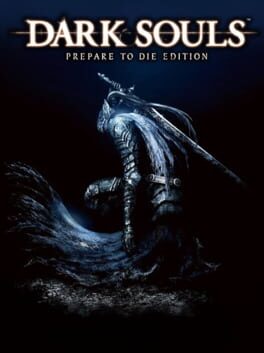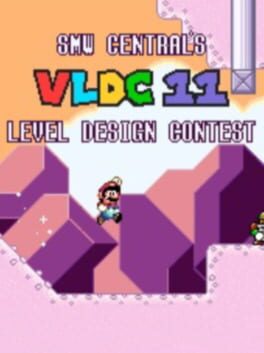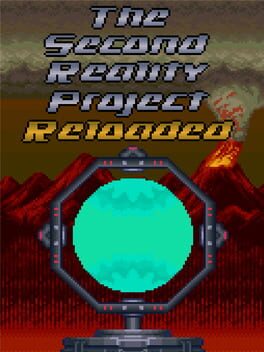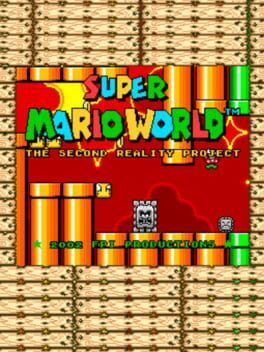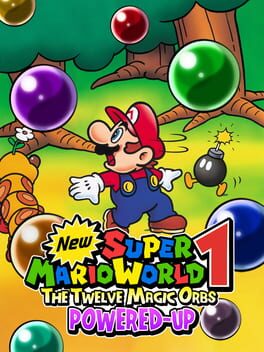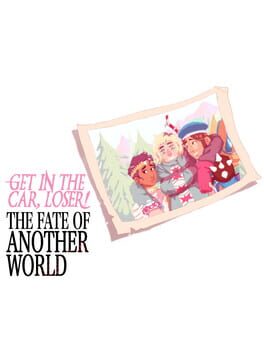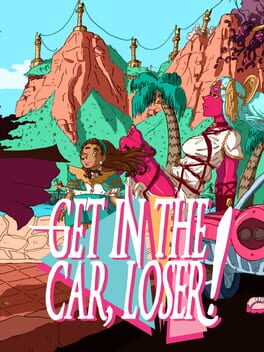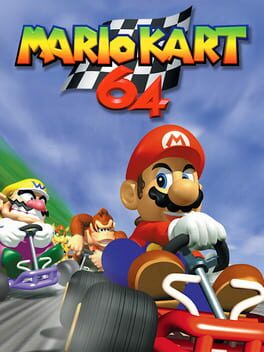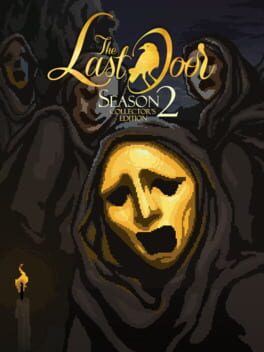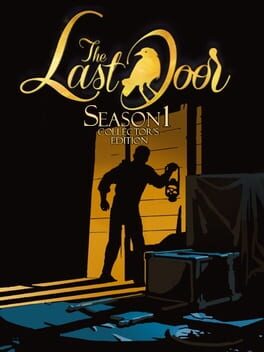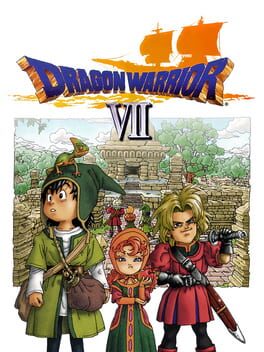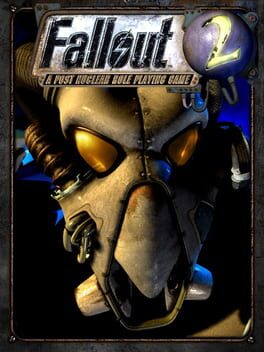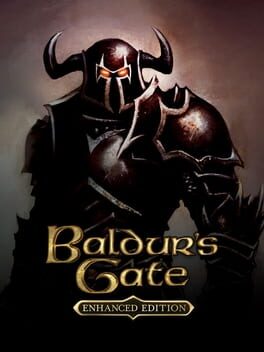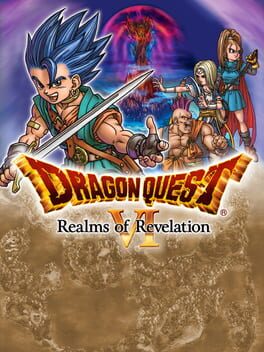DoubleCakes
I can give this less than a perfect 10 and what does it matter? Any less-than-immaculate rating cannot take away just how much of a consummate work of art Dark Souls is. This game’s main factors are excellent and blend together so well. The mechanics, the structure, the world-building, the lore… the stew they make together is amazing.
Back in 2011, Dark Souls showed everyone what a cohesive piece of art a video game could be and the years have not done a disservice to it. It still feels great to play, the world is captivating, and just about every little detail is worth exploring. That’s what it gets down to: just about everything here is worth examining like any other great piece of art in history.
I could mention some of its flaws like the camera can betray you at the most crucial moments or how the collision physics in the Crystal Cave are pretty bad because, hey, those criticisms are legitimate! But art is more than just weighing pros versus cons, so in case you were wondering why I could give a game like this a 9 out of 10 and then say it was one of the greatest pieces of video game art, that’s why.
Back in 2011, Dark Souls showed everyone what a cohesive piece of art a video game could be and the years have not done a disservice to it. It still feels great to play, the world is captivating, and just about every little detail is worth exploring. That’s what it gets down to: just about everything here is worth examining like any other great piece of art in history.
I could mention some of its flaws like the camera can betray you at the most crucial moments or how the collision physics in the Crystal Cave are pretty bad because, hey, those criticisms are legitimate! But art is more than just weighing pros versus cons, so in case you were wondering why I could give a game like this a 9 out of 10 and then say it was one of the greatest pieces of video game art, that’s why.
The SMW community once again comes together to make a cornucopia of great levels. Some are very puzzly, some are surreal, some are artsy, and some are kaizo hard but in general the quality across this romhack is great. I had a splendid time playing these little adventures. Sure the difficulty and quality could fluctuate but I gave myself the rule that if a level was too frustrating, I could just skip. And I did that for a handful of them.
For the most part though, I enjoyed these levels. They were tough but not beyond my ability. I got a wide variety of themes and environments. There was an array of design styles. Altogether, this hack’s feast of level design was easy to love.
I’ve been playing this one on and off for a couple years and I even quit for a brief time because I wasn’t getting the same euphoria I did playing the 9th vanilla level design hack years prior, but eventually I loaded VLDC11 up again and it got infectious for me. I think VLDC9 is always going to standout because I had never played a collaboration hack before and its presentation blew me away. VLDC11, though, is pound-for-pound better than #9.
This annual thing bring out a lot of quality levels.
For the most part though, I enjoyed these levels. They were tough but not beyond my ability. I got a wide variety of themes and environments. There was an array of design styles. Altogether, this hack’s feast of level design was easy to love.
I’ve been playing this one on and off for a couple years and I even quit for a brief time because I wasn’t getting the same euphoria I did playing the 9th vanilla level design hack years prior, but eventually I loaded VLDC11 up again and it got infectious for me. I think VLDC9 is always going to standout because I had never played a collaboration hack before and its presentation blew me away. VLDC11, though, is pound-for-pound better than #9.
This annual thing bring out a lot of quality levels.
So this is my second time finishing The Second Reality Project Reloaded and I think I had a better time this playthrough compared to the first. Maybe it’s my skill having gone up since I first journeyed this romhack 5 years ago or maybe it was me playing this hack alongside the original’s gruesomely hard version 1.5 and thus this version reflected better, but I was less frustrated with this game compared to when I beat it in 2019.
Although this romhack gets pretty difficult, it’s still easier than the original and the difficulty curve is much smoother with only a few spikes across the campaign. That doesn’t mean every rough edge is sanded down. There are still a handful of levels that are plain too long for a single checkpoint. I was using save states– even moreso than my simultaneous playthrough– so I didn’t feel that lack of checkpoints but god does it knock the difficulty up a bracket.
The new graphics are nice although I think many sprites aren’t animated well. Most of the music is good, though. Having played this alongside the original you can see how closely the campaign of this romhack follows the template of SMW vanilla. For the most part, anyway. Absent from the 2002 original, there’s a second secret world that serves as a finale and accessing it is a cool secret altogether. I can see why this blew people away in 2008.
Most of the updates have to do with Reloaded’s presentation so I’m going to repeat a lot of what I said in my review of the original romhack and say that the level design very clever and stylized. It’s a good time playing through TSRPR if you are ready for some challenge. This one holds up.
Although this romhack gets pretty difficult, it’s still easier than the original and the difficulty curve is much smoother with only a few spikes across the campaign. That doesn’t mean every rough edge is sanded down. There are still a handful of levels that are plain too long for a single checkpoint. I was using save states– even moreso than my simultaneous playthrough– so I didn’t feel that lack of checkpoints but god does it knock the difficulty up a bracket.
The new graphics are nice although I think many sprites aren’t animated well. Most of the music is good, though. Having played this alongside the original you can see how closely the campaign of this romhack follows the template of SMW vanilla. For the most part, anyway. Absent from the 2002 original, there’s a second secret world that serves as a finale and accessing it is a cool secret altogether. I can see why this blew people away in 2008.
Most of the updates have to do with Reloaded’s presentation so I’m going to repeat a lot of what I said in my review of the original romhack and say that the level design very clever and stylized. It’s a good time playing through TSRPR if you are ready for some challenge. This one holds up.
Although I have played and finished this romhack’s 2008 remake, I wanted to play the original Second Reality Project for the sake of curiosity. What were romhacks like in 2002 when the scene was young and the tools were new? I wanted some romhack rawness from a time before hack design ideas got codified in the community.
Granted, you can get 99% of that through this romhack’s Reloaded update as I quickly learned playing this version. It wasn’t long into my playthrough of this game that I loaded up Reloaded and played it alongside this one. Obsessive, but it gave me clear perspective on what makes this romhack special and helped me reappraise Reloaded.
There’s a charm that comes with this early version where vanilla assets are used in strange ways. There are a lot of levels where monocoloured pipes are a foundational terrain feature and brown blocks are used to represent the walls of a building. The hack is experimental in that the creator had to use these assets because they had nothing else. The remake avoids this problem by importing tilesets that fit themes any level is going for.
But, like the use of the final boss theme in the “Aggressive Water” level, I appreciate the strangeness. It gives the hack an absurd quality that works well with its idiosyncratic level design elements. You can see how this hack is extending off of the original SMW’s design tendencies and if you ask me, the levels in this hack are great for the most part. Even twenty years later, this hack has a lot of character and style.
A lot of the levels use SMW’s mechanics in clever ways or communicate interesting themes. This hack often had sections with spaced out platforms that were difficult but gave the level a vast feel. This is only present in a few stages but this hack also repeats section of level– not absolutely copy-and-pasted but mostly the same with small changes between iteration like changing up enemies or changing terrain slightly. It gives those levels a song-like structure with verses and choruses.
This hack gets too difficult, though. For a long time, I remembered this hack (or Reloaded, rather) having a lot of very long levels. Most levels are decently sized, actually. Some levels are quite long, though, and would be gruesome if not for save states. The remake is better about checkpoints but there’s so much you can do with a single checkpoint in a stage that’s 5+ sublevels long. The final levels are really rough, too. Some of the jumps in “Bowser’s Starship” were kaizo-like.
I’m one of the few people on this planet who could be enriched by playing this original version of Second Reality Project. I like its surreal environments and playing with vanilla textures allowed me to appreciate its unique designs that I didn’t grok when I played Reloaded and had a lot of those qualities obscured by the hack’s custom tilesets.
Ultimately though, Reloaded is the definitive version of this game. Among other things, this version of the hack had a lot of moments where enemies didn’t spawn in when they were supposed to. Maybe it was a problem with the memory that Reloaded fixed, but it happened somewhat frequently. If you are going to play The Second Reality Project, there’s little reason not to play the remake.
Granted, you can get 99% of that through this romhack’s Reloaded update as I quickly learned playing this version. It wasn’t long into my playthrough of this game that I loaded up Reloaded and played it alongside this one. Obsessive, but it gave me clear perspective on what makes this romhack special and helped me reappraise Reloaded.
There’s a charm that comes with this early version where vanilla assets are used in strange ways. There are a lot of levels where monocoloured pipes are a foundational terrain feature and brown blocks are used to represent the walls of a building. The hack is experimental in that the creator had to use these assets because they had nothing else. The remake avoids this problem by importing tilesets that fit themes any level is going for.
But, like the use of the final boss theme in the “Aggressive Water” level, I appreciate the strangeness. It gives the hack an absurd quality that works well with its idiosyncratic level design elements. You can see how this hack is extending off of the original SMW’s design tendencies and if you ask me, the levels in this hack are great for the most part. Even twenty years later, this hack has a lot of character and style.
A lot of the levels use SMW’s mechanics in clever ways or communicate interesting themes. This hack often had sections with spaced out platforms that were difficult but gave the level a vast feel. This is only present in a few stages but this hack also repeats section of level– not absolutely copy-and-pasted but mostly the same with small changes between iteration like changing up enemies or changing terrain slightly. It gives those levels a song-like structure with verses and choruses.
This hack gets too difficult, though. For a long time, I remembered this hack (or Reloaded, rather) having a lot of very long levels. Most levels are decently sized, actually. Some levels are quite long, though, and would be gruesome if not for save states. The remake is better about checkpoints but there’s so much you can do with a single checkpoint in a stage that’s 5+ sublevels long. The final levels are really rough, too. Some of the jumps in “Bowser’s Starship” were kaizo-like.
I’m one of the few people on this planet who could be enriched by playing this original version of Second Reality Project. I like its surreal environments and playing with vanilla textures allowed me to appreciate its unique designs that I didn’t grok when I played Reloaded and had a lot of those qualities obscured by the hack’s custom tilesets.
Ultimately though, Reloaded is the definitive version of this game. Among other things, this version of the hack had a lot of moments where enemies didn’t spawn in when they were supposed to. Maybe it was a problem with the memory that Reloaded fixed, but it happened somewhat frequently. If you are going to play The Second Reality Project, there’s little reason not to play the remake.
Last year, I finished The Second Reality Project 2 and Super Mario World Central Production 2 and those two titles vied to be my new favourite SMW romhack. But in comes New Super Mario World 1: The Twelve Magic Orbs POWERED-UP, a game I loved as much as its title is long.
Its fundamentals are unchanged from SMW proper, aside from disallowing powerups to be saved and allowing certain powerups to arc their projectiles upwards. What it adds, besides tons new levels, are a dozen new powerups. Ice Mario shoots freezing balls instead of fireballs. Bubble Mario shoots bubbles which turn enemies into bubbles that can be used as a good boost jump. This leads to my big flaw with the romhack...
Some powerups aren’t very good. Cloud Mario is cumbersome to use effectively. The game has the super leaf as a powerup– Raccoon Mario from SMB3. It uses that tap-jump-to-fly input method which I think is annoying. SMW fixed that with its Cape Mario (which is in this game, too!) which was easier on the hands.
And some of them are not very clever conceptually. Superball Mario is like what if Fire Mario’s fireballs bounced indefinitely and you could only use one at a time. There’s also the game using special blocks that require specific powerups to break (which, to be fair, are always available in the level). Some powerups fit very well into SMW’s moveset and previously established powerup system, but only a couple.
I had a great time anyway. The level design is top-notch and there is a lot of level in this game. It’s hard to elaborate but there weren’t many levels I’d say were outright mediocre aside from gimmicky ones like the minecart levels or maybe the ice levels with their ubiquitous slippery surfaces. World progression is very simple with one world leading to the next and only one secret exit per world that would lead to a switch palace or some other bonus. Maybe it was the size of the game map but the world of The Twelve Magic Orbs felt expansive.
And after I scoured the game for all 276 Star Coins so I could unlock the secret final world, I completed the last couple challenges. The game ends on a cool climax and once I was done, I looked back on a superb romhack. This one is my new favourite.
Its fundamentals are unchanged from SMW proper, aside from disallowing powerups to be saved and allowing certain powerups to arc their projectiles upwards. What it adds, besides tons new levels, are a dozen new powerups. Ice Mario shoots freezing balls instead of fireballs. Bubble Mario shoots bubbles which turn enemies into bubbles that can be used as a good boost jump. This leads to my big flaw with the romhack...
Some powerups aren’t very good. Cloud Mario is cumbersome to use effectively. The game has the super leaf as a powerup– Raccoon Mario from SMB3. It uses that tap-jump-to-fly input method which I think is annoying. SMW fixed that with its Cape Mario (which is in this game, too!) which was easier on the hands.
And some of them are not very clever conceptually. Superball Mario is like what if Fire Mario’s fireballs bounced indefinitely and you could only use one at a time. There’s also the game using special blocks that require specific powerups to break (which, to be fair, are always available in the level). Some powerups fit very well into SMW’s moveset and previously established powerup system, but only a couple.
I had a great time anyway. The level design is top-notch and there is a lot of level in this game. It’s hard to elaborate but there weren’t many levels I’d say were outright mediocre aside from gimmicky ones like the minecart levels or maybe the ice levels with their ubiquitous slippery surfaces. World progression is very simple with one world leading to the next and only one secret exit per world that would lead to a switch palace or some other bonus. Maybe it was the size of the game map but the world of The Twelve Magic Orbs felt expansive.
And after I scoured the game for all 276 Star Coins so I could unlock the secret final world, I completed the last couple challenges. The game ends on a cool climax and once I was done, I looked back on a superb romhack. This one is my new favourite.
The Fate of Another World is a nice coda to Get in the Car, Loser! I found myself enjoying the story a lot more than the prime GITCL experience, mostly because there's more interparty tension and there's an urgency to the plot. The new enemies are pretty cool and I enjoyed the dispowerment of having everyone "cursed" at the start of the adventure and slowly reclaiming my stolen strength.
The new music is pretty good, too. If this is the final chapter to Get in the Cat, Loser! then it's a good one.
The new music is pretty good, too. If this is the final chapter to Get in the Cat, Loser! then it's a good one.
I’m a Final Fantasy XIII sicko so when I found out that Get in the Car, Loser! was heavily inspired by the divisive but unique 2009 JRPG, I raised a brow in curiosity. A lot of indie JRPGs are concerned with “fixing” the typical idea of the genre which has never grabbed my interest. Someone making something inspired by FF13, though? That is a decision. Call me a “l’cie” because playing that game would be my Focus.
Get in the Car, Loser!’s take on FF13’s combat sands off a lot of the extraneous math from the original game’s design and simplifies things, for the better I think. The lack of proper exploration that most JRPGs have makes GITCL snappier. There isn’t a lot of stat math, either. The game gets a lot out of a little and maybe it wears out its mechanics quicker than other RPGs but that’s okay because it’s also a shorter experience, clocking in at about ten hours.
The combat loop took some getting used to but once I wrapped my head around it, I liked shifting through the three boards the game gives you and then topping off a cycle with Grace’s Fate attack. There’s more customization and equipping trinkets to switch up a hero’s moveset is the most drastic (and dynamic) difference between this game and the FF13 that inspired it.
I didn’t like juggling elemental affinities, though. Too often did I restart a battle because I had a Ravage attack the same element as an enemy. On the positive side: healing spells being temporary worked as a good balance between the urgency of combat compared to the long-term strategy of a battle.
On that note, making the protagonist a support character (instead of a mainline fighter) is a nice twist on a JRPG trope. I guess maybe that’s why the story is so focused on personal problems rather than a big fantastic plot? I can’t say I like it, though. There is some cool lore in this game that feels very inspired by later Final Fantasy games, but most of the in-car dialogue is concerned with the anxieties of the characters rather than the plot at hand. I don’t mind a lot of soul-searching– road trip stories typically have their characters be introspective and reflect on things– but the balance is heavy on the contemplation side and not enough on anything else. A lot of the discussion is about queerness and a lot of it was stuff I’ve seen before. It’s took until Act III and Sam to examine her own problematic thoughts for anything to get interesting. The game also employs that “texty” ironic dialogue style unconcerned with correct punctuation and spelling and I am not the person for that.
The villains are modern fascists taken wholesale out of the real world. The game opens with some dickweed harassing Sam with a monologue you could read off of Twitter. I don’t mind these kinds of jagoffs being the villains in the story but it’s extremely blunt with it. The fascists worship the main villain the but the rest of the narrative doesn’t do a good job of tying queerness and fascism to the world-building in a way that feels like a wasted opportunity.
The game’s road trip theming and modernpunk setting feels distinctly inspired by Final Fantasy XV. I like how all the healing items are corner store food like samosas and bottles of iced tea. I like the general style of the game, too. The music’s great. It seems to take more from the Persona games than any Final Fantasy with its funk-soul flavour across many tracks. The vocal track battle themes quickly got stuck in my head and I’m also a big fan of the “Store ‘n’ Gas” theme with its psyched up production.
I complain a lot but this ended up being my favourite new game experience of 2024 and I this is still very much worth checking out even if you are not a FF13 goblin like myself.
Get in the Car, Loser!’s take on FF13’s combat sands off a lot of the extraneous math from the original game’s design and simplifies things, for the better I think. The lack of proper exploration that most JRPGs have makes GITCL snappier. There isn’t a lot of stat math, either. The game gets a lot out of a little and maybe it wears out its mechanics quicker than other RPGs but that’s okay because it’s also a shorter experience, clocking in at about ten hours.
The combat loop took some getting used to but once I wrapped my head around it, I liked shifting through the three boards the game gives you and then topping off a cycle with Grace’s Fate attack. There’s more customization and equipping trinkets to switch up a hero’s moveset is the most drastic (and dynamic) difference between this game and the FF13 that inspired it.
I didn’t like juggling elemental affinities, though. Too often did I restart a battle because I had a Ravage attack the same element as an enemy. On the positive side: healing spells being temporary worked as a good balance between the urgency of combat compared to the long-term strategy of a battle.
On that note, making the protagonist a support character (instead of a mainline fighter) is a nice twist on a JRPG trope. I guess maybe that’s why the story is so focused on personal problems rather than a big fantastic plot? I can’t say I like it, though. There is some cool lore in this game that feels very inspired by later Final Fantasy games, but most of the in-car dialogue is concerned with the anxieties of the characters rather than the plot at hand. I don’t mind a lot of soul-searching– road trip stories typically have their characters be introspective and reflect on things– but the balance is heavy on the contemplation side and not enough on anything else. A lot of the discussion is about queerness and a lot of it was stuff I’ve seen before. It’s took until Act III and Sam to examine her own problematic thoughts for anything to get interesting. The game also employs that “texty” ironic dialogue style unconcerned with correct punctuation and spelling and I am not the person for that.
The villains are modern fascists taken wholesale out of the real world. The game opens with some dickweed harassing Sam with a monologue you could read off of Twitter. I don’t mind these kinds of jagoffs being the villains in the story but it’s extremely blunt with it. The fascists worship the main villain the but the rest of the narrative doesn’t do a good job of tying queerness and fascism to the world-building in a way that feels like a wasted opportunity.
The game’s road trip theming and modernpunk setting feels distinctly inspired by Final Fantasy XV. I like how all the healing items are corner store food like samosas and bottles of iced tea. I like the general style of the game, too. The music’s great. It seems to take more from the Persona games than any Final Fantasy with its funk-soul flavour across many tracks. The vocal track battle themes quickly got stuck in my head and I’m also a big fan of the “Store ‘n’ Gas” theme with its psyched up production.
I complain a lot but this ended up being my favourite new game experience of 2024 and I this is still very much worth checking out even if you are not a FF13 goblin like myself.
1996
Even with an analog stick to guide your turning, this game doesn't feel much different than Super Mario Kart. The drift is ENORMOUS to the point where I got used to how far my turns would ride and I let that become part of my racing instincts.
I played a lot of this game when I was a kid but that was mostly deathmatch so there wasn't a lot of nostalgia on this run through all four cups. This improves on the first Mario Kart game in that the tracks are a lot better. I mean, they're actually in 3D for one thing, but they are pretty great tracks with lots of room and verticality. They're downright definitive!
The music is pretty good too. I'd say this is a nice game to check out if you got a little spare time, but I'm sure the more recent Mario Kart games are a lot better.
I played a lot of this game when I was a kid but that was mostly deathmatch so there wasn't a lot of nostalgia on this run through all four cups. This improves on the first Mario Kart game in that the tracks are a lot better. I mean, they're actually in 3D for one thing, but they are pretty great tracks with lots of room and verticality. They're downright definitive!
The music is pretty good too. I'd say this is a nice game to check out if you got a little spare time, but I'm sure the more recent Mario Kart games are a lot better.
1992
This is a surprisingly playable game even though it's too ahead of its time to be great. The lack of granularity with the turning input hurts it but for what it's worth, the game has responsive controls even if the slip mechanics are wonky.
Everything here would be improved in Mario Kart 64 so this game serves more as a historical curiosity than something worth playing.
Everything here would be improved in Mario Kart 64 so this game serves more as a historical curiosity than something worth playing.
This sequel keeps the atmosphere and stylistic brilliance of The Last Door while upgrading its storytelling and gameplay. The puzzles are more intricate, especially since each episode is a lot bigger than what we saw in the first game. Like in the first game the puzzles are well designed and based in reality aside from the fourth episode which delves into a much-earned surrealism. There's more emotion and humanity in the narrative compared to the first game's sparse personal stakes.
I don't think that the game ends on a satisfying note, though. I could use a Last Door Season 3 even if the developers have happily moved on. Overall, this is a really cool point and click saga and I'm glad I got around to playing this one.
I don't think that the game ends on a satisfying note, though. I could use a Last Door Season 3 even if the developers have happily moved on. Overall, this is a really cool point and click saga and I'm glad I got around to playing this one.
2014
So this was a pretty good PnCA to revisit. The writing and atmosphere are peak. The game is pretty snappy with puzzles of moderate difficulty segmented very comfortably into episodes. When I first played this I was satisfied enough with the Lovecraftian narrative to not care for Season 2 but me now? I'm ready to check out how this story continues!
2000
I’m a sicko, so I prefer random encounters. That’s why I played the original PSX version over the 3DS remake. That three hour intro a lot to get through but once the game gets going, it’s very compulsive to play. This episodic approach to a JRPG story works well in the case of Dragon Quest VII. The writing (and localization) is pretty good although I think once the third act comes around and the story becomes more interconnected, my interest isn’t as strong.
The reason why someone would ought to play the 3DS version is that it’s easier to collect the Shards you need to unlock new parts of the game. I got lost a few times and had to consult a guide to find the missing Shard. I didn’t want to use the guide. There are a lot of locational abilities that don’t serve much purpose, like Smell which tells you how many treasures are still lingering but only on single maps. You are given a lot of abilities to navigate this game and they’re not very useful. Pamela is a fortune teller and she was never useful to finding Shards nor TinyMedals.
Obviously the star of the show is the class system, which is robust although I think the Monster Classes are superfluous and I wish there was more flexibility in builds since characters can pretty much either be strength-focused and pickup Warrior, Fighter, etc or they can be magic-focused and get Mage, Cleric etc.
I think the biggest knock against the class system, though, is how the game shuffled around its characters. You unlock the class system with three characters in the party, you journey with them a long time, and then the fourth member comes in grossly underdeveloped. Then one of the original characters is swapped out to be replaced with another underdeveloped hero. That one that swaps out only comes back late in the game so that’s only two characters that get a fair amount of time to grow as warriors.
Regardless of my complaints, I found this to be an exciting and engrossing RPG. I liked the challenge. I like the class system. The graphics and music are good. The story’s interesting although for how long this game is, the story is surprisingly basic. 100 hours on my completed save file with 70 hours clocked in on the emulator. I went back and finished the post-game (which involved me using cheats to unlock a lot of classes and speed up grind). The bonus stuff is pretty cool and having beaten the two bonus dungeons, I feel I can close the book on this legendary RPG.
The reason why someone would ought to play the 3DS version is that it’s easier to collect the Shards you need to unlock new parts of the game. I got lost a few times and had to consult a guide to find the missing Shard. I didn’t want to use the guide. There are a lot of locational abilities that don’t serve much purpose, like Smell which tells you how many treasures are still lingering but only on single maps. You are given a lot of abilities to navigate this game and they’re not very useful. Pamela is a fortune teller and she was never useful to finding Shards nor TinyMedals.
Obviously the star of the show is the class system, which is robust although I think the Monster Classes are superfluous and I wish there was more flexibility in builds since characters can pretty much either be strength-focused and pickup Warrior, Fighter, etc or they can be magic-focused and get Mage, Cleric etc.
I think the biggest knock against the class system, though, is how the game shuffled around its characters. You unlock the class system with three characters in the party, you journey with them a long time, and then the fourth member comes in grossly underdeveloped. Then one of the original characters is swapped out to be replaced with another underdeveloped hero. That one that swaps out only comes back late in the game so that’s only two characters that get a fair amount of time to grow as warriors.
Regardless of my complaints, I found this to be an exciting and engrossing RPG. I liked the challenge. I like the class system. The graphics and music are good. The story’s interesting although for how long this game is, the story is surprisingly basic. 100 hours on my completed save file with 70 hours clocked in on the emulator. I went back and finished the post-game (which involved me using cheats to unlock a lot of classes and speed up grind). The bonus stuff is pretty cool and having beaten the two bonus dungeons, I feel I can close the book on this legendary RPG.
1998
This game was the first western RPG I played and a favourite of the genre. That said, I was feeling the fatigue of playing this game for the fourth(?) time. It’s satisfying to shoot people in the eyes for 95% accuracy and critical them to death but big fights with a lot of different chess pieces take a lot of time with how everyone has to move around. Maybe that’s why I quit halfway through this playthrough, but even when I picked it back up I figured this would be the last time I played this game.
Unlike all the other times I played this game, I went for an evil character. Thing is, there’s a lot more things to do if you are trying to be the good guy and they’re usually more complex to. There are some cool things you can do if you go the evil route, but they are rare– even in this Restoration Patch that I installed. It’s also hard to keep a low karma rating when you come across so many evil gangs that will ambush you and you have to wipe them out to defend yourself.
There’s a lot of classic CRPG jank too like say you choose the wrong dialogue option and then a person turns hostile and then all their friends and neighbours turn hostile and suddenly you can’t talk to an NPC you need to thus locking you out of a quest. It’s the kind of game where you have you finger on the quicksave and quickload buttons a lot. If you drop important items, it’s possible to lose them forever. The mechanisms of Fallout 2 are very fragile. This is also a game where death is permanent including on your allies.
I’m complaining a lot about a game that I love quite a bit. Maybe I’m coming off Fallout 2 with a lot of frustration but it needs to be said that the game’s a vast RPG with lots of interest quests and rich mechanics. The character building is pretty good and the world is a joy to explore, even if a lot of the dialogue writing and humour doesn’t hold up well and would be outclassed by Fallout: New Vegas. If this playthrough was my last, I wish it would have been a more pleasant experience, but that can’t take away all the years of loving this game.
Unlike all the other times I played this game, I went for an evil character. Thing is, there’s a lot more things to do if you are trying to be the good guy and they’re usually more complex to. There are some cool things you can do if you go the evil route, but they are rare– even in this Restoration Patch that I installed. It’s also hard to keep a low karma rating when you come across so many evil gangs that will ambush you and you have to wipe them out to defend yourself.
There’s a lot of classic CRPG jank too like say you choose the wrong dialogue option and then a person turns hostile and then all their friends and neighbours turn hostile and suddenly you can’t talk to an NPC you need to thus locking you out of a quest. It’s the kind of game where you have you finger on the quicksave and quickload buttons a lot. If you drop important items, it’s possible to lose them forever. The mechanisms of Fallout 2 are very fragile. This is also a game where death is permanent including on your allies.
I’m complaining a lot about a game that I love quite a bit. Maybe I’m coming off Fallout 2 with a lot of frustration but it needs to be said that the game’s a vast RPG with lots of interest quests and rich mechanics. The character building is pretty good and the world is a joy to explore, even if a lot of the dialogue writing and humour doesn’t hold up well and would be outclassed by Fallout: New Vegas. If this playthrough was my last, I wish it would have been a more pleasant experience, but that can’t take away all the years of loving this game.
How many times have I started this game only to fall off within the first couple hours? How many non-starters? I’m pretty sure the count is in the double digits. I don’t care for the Forgotten Realms setting and this experience is a basic presentation of it. But that’s where I found inspiration: I rolled a character who is a POS so my antipathy for the setting matched his antipathy for the world. I roleplayed his misanthropy.
Now, that helped my motivation to journey through this world but that didn’t fix any of the mechanical issues with the game. For example, the fact that for every ten attacks I levelled against my enemies, only one of those hit. Even at the end of the game, most of my characters missed 2/3rds of the time. It’s so frustrating and the fact that attacks can be so brutal and combat could be so chaotic meant my characters died a lot and I made use of savescumming (and for some reason, quickload didn’t work right).
I didn’t make much use of macros or custom hotkeys so dealing with spell selection was finicky. Overall, a lot of locales and dungeons weren’t very exciting to explore and the quest design was basic. I didn’t care for the story either. The only “story” I felt something for was Dorn’s questline and Baeloth’s sass (both EE additions).
I didn’t like this game much, found it frustrating, but I am glad I played it. This is a piece of computer RPG history. This was the first game to notably adapt the DnD experience. I have my problems with the game mechanically but in terms of emulating the classic tabletop essence, this thing is feature complete.
Now, that helped my motivation to journey through this world but that didn’t fix any of the mechanical issues with the game. For example, the fact that for every ten attacks I levelled against my enemies, only one of those hit. Even at the end of the game, most of my characters missed 2/3rds of the time. It’s so frustrating and the fact that attacks can be so brutal and combat could be so chaotic meant my characters died a lot and I made use of savescumming (and for some reason, quickload didn’t work right).
I didn’t make much use of macros or custom hotkeys so dealing with spell selection was finicky. Overall, a lot of locales and dungeons weren’t very exciting to explore and the quest design was basic. I didn’t care for the story either. The only “story” I felt something for was Dorn’s questline and Baeloth’s sass (both EE additions).
I didn’t like this game much, found it frustrating, but I am glad I played it. This is a piece of computer RPG history. This was the first game to notably adapt the DnD experience. I have my problems with the game mechanically but in terms of emulating the classic tabletop essence, this thing is feature complete.
So I started this playthrough back in 2018, fell off for years, then picked it back up in 2020 or so and went through most of the rest of the game. Dragon Quest VI is weird because it's vignette-based and the main plot doesn't build its tension much so when I got to the last leg of the game, the Dreadworld, I didn't feel connected to the story and felt like I had seen enough. I quit knowing I was just a few steps from credits.
And I was okay with that but I don't like leaving playthroughs unfinished, especially if they are so close from the end (and even if I was playing on replaying this game anyway), so I paused my Dragon Quest VII run to close the book on this one and pushed out the last few chapters. I pride myself on my recent habit of finishing RPGs but any playthrough that has years worth of breaks in between– you're gonna lose the plot. Luckily finishing this game off wasn't too hard since I picked some great class progressions.
So what is the deal with Dragon Quest VI? I think its focus on vignette-based storytelling and having two large worlds to explore make it a little immemorable. There is too much game in this DQ6. Too many towns, too many vehicles. The real world/dream world plotline is overly complicated. I never got a good sense of how the two worlds work together.
That said, any game with a class system as robust as the one DQ6 has gets point for me. That sort of thing– picking classes and levelling them up– has great appeal and overall the Dragon Questiness of this journey is infectious and satisfying.
And I guess I am a little forgiving of this game's shortcomings because they were trying to do something different. Yeah, I prefer the tighter narrative of Dragon Quest V but Enix had already made that game so for the next one they went for something more open-ended and episodic. They might have not done a great job but overall I still think they made a pretty good game.
And I was okay with that but I don't like leaving playthroughs unfinished, especially if they are so close from the end (and even if I was playing on replaying this game anyway), so I paused my Dragon Quest VII run to close the book on this one and pushed out the last few chapters. I pride myself on my recent habit of finishing RPGs but any playthrough that has years worth of breaks in between– you're gonna lose the plot. Luckily finishing this game off wasn't too hard since I picked some great class progressions.
So what is the deal with Dragon Quest VI? I think its focus on vignette-based storytelling and having two large worlds to explore make it a little immemorable. There is too much game in this DQ6. Too many towns, too many vehicles. The real world/dream world plotline is overly complicated. I never got a good sense of how the two worlds work together.
That said, any game with a class system as robust as the one DQ6 has gets point for me. That sort of thing– picking classes and levelling them up– has great appeal and overall the Dragon Questiness of this journey is infectious and satisfying.
And I guess I am a little forgiving of this game's shortcomings because they were trying to do something different. Yeah, I prefer the tighter narrative of Dragon Quest V but Enix had already made that game so for the next one they went for something more open-ended and episodic. They might have not done a great job but overall I still think they made a pretty good game.
